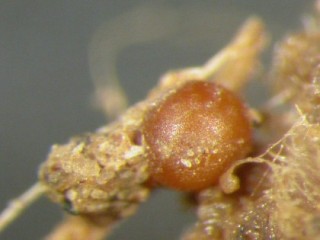
Potato cyst nematodes (PCN) Globodera pallida and G. rostochiensis are serious pests of potatoes and cause large yield losses. PCN are easily spread and may remain dormant in the soil without a potato crop for more than 10 years.
Free-living nematodes are also pests of potatoes and can cause yield losses. Stubby root (Trichodorus) nematodes are vectors of TRV which causes spraing
NIAB offers soil tests for both PCN and free-living nematodes (FLN)
When assessing soil for PCN, cysts are identified and counted and then crushed to release the eggs which are also counted. Results are reported as cysts per kg of soil and eggs/juveniles per g of soil.
When assessing soil for plant pathogenic free-living nematodes, nematodes are counted and identified to genus level. Nematodes identified are Pin (Paratylenchus), Sheath (Hemicycliphora), Stubby root (Trichodorus), Needle (Longidorus), Dagger (Xiphinema), Root lesion (Pratylenchus), Root Knot (Meloidogyne), Stem (Ditylenchus), Cyst juveniles (Heterodera & Globodera), Spiral (Helicotylenchus & Rotylenchus). The result is reported as number of nematodes per litre of soil.
For NIAB Labtest testing enquiries contact Helen Appleyard.
